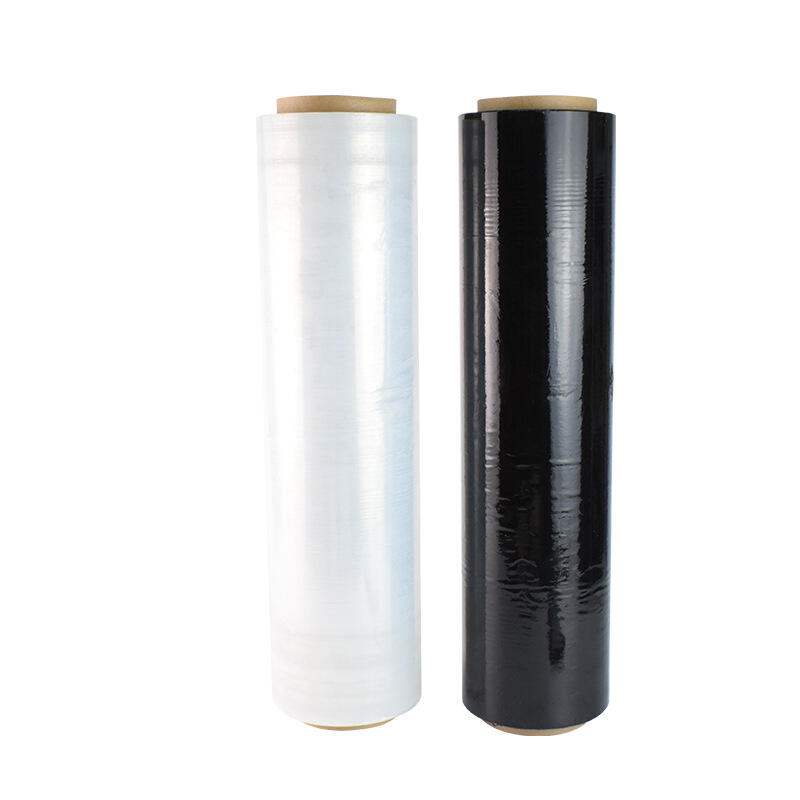Introduction
From food packaging to agricultural coverings, we are surrounded by plastic films in our daily lives. With the growing concern on plastic pollution and environmental sustainability, interest in knowing what makes biodegradable and none-biodegradable plastic films different is increased. In this article, I delve in detail into what each of them is and what characteristics they have, furthermore point out advantages, disadvantages and compaction the impact on the environment to guide decision makers.
Biodegradable Plastic Films
Biodegradable plastic films are made of materials that can be decomposed by microorganisms and eventually turned into water, carbon dioxide and biomass. Biodegradation in this case is part of the usual process of recycling nutrients in an ecosystem.
A.Types of biodegradable plastic films Full size table
Polylactic acid (PLA) a ton of biodegradable plastics made from renewable resources such as corn starch or sugar cane.
Polyhydroxyalkanoates (PHA): Bacteria eat renewables and make polymers.
Starch-based films, mainly composed of starch and biodegradable additives;
B. Benefits of Biodegradable Plastic Films
Environmentally friendly: In addition to the lignin that can be recovered from this reaction, an unknown amount of carbon will be released back in the air with its decomposition process.
Compostable: These films break down in industrial composting facilities.
Biodegradable in their nature, the use of biodegradable films can enable a return of nutrients to the soil eventually supporting circular economy.
C. Limitations of Biodegradable Plastic Films
Limited durability vs traditional plastics can limit their performance in some applications.
Expensive to produce with the specialized materials and production-processes.
Consumer confusion as the improper disposal can enable these films to make their way into traditional plastic waste streams.
Non-biodegradable Poly Films
Plastic Films: Non-biodegradable plastic films made from polymers that are derived from petrochemicals and do not decompose, naturally. They last hundreds of years in the environment,
A. Non-Biodegradable Plastic Films Common Types
Polyethylene (PE) is commonly used for its flexibility and as a moisture barrier.
Polyvinyl chloride (PVC): is resistant and adaptable to a lot of types but can release toxins during manufacturing and incineration.
Polystyrene (PS) :Styrofoam is light-weight and offers great protection to your food, but this also means the population of Polystyrene (PS) particles is so small in water bodies that there are not enough bits per cubic meter to detect.
Advantages of Non-Biodegradable Plastic Films
B. Pros and Cons of Using Solar Radiation Management Technologies
Their durability and strength make them perfect for various applications.
High economic efficiency (standardized production processes and vast amounts of produced commodities lead to economies of scale).
Applicational versatility, ranging from food packaging to insulation materials.
C. Cons of Non-Biodegradable Plastic Films
Environmental pollution since they remain in ecosystems.
Global plastic waste problem, e.g.ocean pollution
Potential harm to marine life and wildlife (where plastics are often confused for food)
Environmental Impact
This has raised serious environmental concerns over the carbon footprint of such a plastic film. By contrast, the impact of biodegradable films can be potentially less, simply because they are capable of being composted thereby reducing the amount that ends up littering landfills and posing a risk to long-term pollution. Yet displayed improperly they could still contribute to litter. This creates adverse environment impacts as Non-biodegradable films leave their imprint in the metals for years and harm the eco system and life of wild animals which can be very harmful.
Applications and Uses
Depending on the use, you might choose biodegradable versus non-biodegradable plastic films. For instance, one of the applications could be in food packaging, biodegradable films may great as sustainable alternatives but it is not ideal for all sorts of food PRODUCTS. In agriculture, they can also be used as biodegradable films in mulching which naturally decompose at the end of the growing season.
Recycling and Disposal
The recyclability of the plastic films leads to a substantial environmental impact. While many non-biodegradable plastics can be recycled, due to the fact that biodegradable plastics will break down overtime if left in nature too long they contaminate recycling streams and reduce the quality of the recycling materials. These are both the kinds of films that require proper disposal and recycling practices.
Conclusion
Knowing the contrast between biodegradable and non-biodegradable film is important for anyone who wants to make a choice that is at least supportive of the environment. The biodegradeable films will ultimately make your footprint on the planet smaller, but do need to be used and disposed of correctly. While non-biodegradable films have these advantageous properties in durability, price and more they do contribute to longer-term environmental problems. The move towards a circular economy globally is underway, and the advancement of sustainable film technology could see significant benefits in reducing plastic pollution — particularly within natural habitats.


